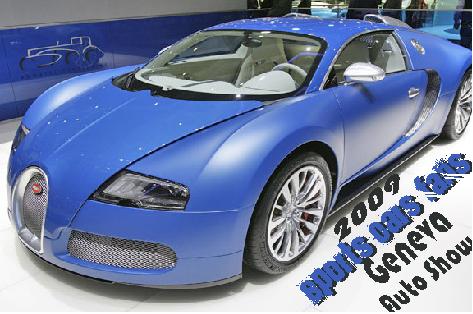Review: 2009 Hyundai Elantra Touring

Hyundai has been batting a thousand of late, with new vehicles like the Genesis sedan and Genesis coupe shaking up their respective segments and leaving class leaders looking over their shoulders. The equally new Elantra Touring hasn't created as much buzz as its rear-wheel-drive brethren, but the five-door hatchback competes with a host of vehicles available in the sub-$20,000 range, all of which are screaming for attention from an increasingly picky buyer who demands something practical, affordable and efficient for his dwindling dollars.
In order to be heard above the noise, Hyundai chose to import one of its existing models from abroad rather than developing a new Elantra model from scratch. They chose the i30, designed in Germany and currently on sale in Europe, Australia and South Korea. The Elantra Touring is very much a direct port of the i30 and actually has little in common with the four-door Elantra sedan, save for its 2.0-liter four-cylinder engine and transmission choices. Rather, its closest mechanical cousin is the Euro-only Kia cee'd.
It would seem, then, that the i30 was not originally developed with U.S. customers in mind. Will the resulting Elantra Touring be a hit here, or has Hyundai finally foul tipped a ball?
One thing the Elantra Touring has over its four-door namesake is style. The two vehicles share no body panels and one wouldn't guess the Touring model is actually an Elantra based on the four-door's styling. The Touring is actually shorter than the sedan (176.2 inches vs. 177.4), but its wheelbase is two inches longer. Combined with a roof that terminates into a steeply sloping hatch, the extra space between the axles makes the Touring look longer and larger.
The Touring's sheet metal is also more attractive thanks to a strong character line running the car's length with a concave sweep up to the windows. This line emanates up front behind the large headlights (dig the blue angel eyes on the projector lamps) and combines with some pinched metal running up to the A-pillar to create distinct front fenders and a raised hood. The thin grille sports a chromed corporate 'H' with pride and small chrome eyebrow accents set off the fog-lights in each corner of the front fascia.

Hyundai has fitted the Elantra Touring with vertical tail-lamps out back, similar to the units you'll find on vehicles such as Volvo wagons and the Honda CR-V. They contribute to safer stops in traffic since their tops can still be seen above high hoods. The rest of the back is clean and the near non-existent rear bumper contributes to the posterior's slick surfacing. Some might call this car's styling mundane, but we see it as safe and sophisticated, the off-brand suit of the sub-$20k set.

Some might expect the Elantra Touring to have a spartan interior made of recycled pop bottles and leatherette seats. Remember, this is actually the i30, a vehicle originally made for Europeans who don't believe an economy car must feel like a cheap car. The Elantra Touring has things other vehicles in its class don't, like a soft-touch dash, solid metal shifter knob and an information display between its tach and speedo. Go ahead, poke the dash – it'll give. Do that in some competitors and you'll sprain your finger.
The controls are logical and fit the Elantra's no-nonsense demeanor. The stereo's on top and the HVAC controls are below (just two knobs and a few larger buttons), with the the four-speed automatic sprouting from the floor. The transmission lacks any manual shifting, but you've got only four forward gears anyway and there's a short-throw five-speed manual available for control freaks.



We particularly like the Elantra Touring's large, legible gauges that frame the aforementioned VW-like information display, as well as the best Hyundai steering wheel we've yet to grip. The meaty rim filled our hands nicely and the redundant controls for the stereo and cruise control are all flush and contained within the wheel itself. We're also fans of Hyundai's new center stack display for the radio. The big blue screen is as easy to read as a children's book and displays the time and outside temperature when the radio is off. There's also a full complement of connectivity ports in the center armrest for your iPod or MP3 player, as well as a gutter for your cables so the lid can be closed without trapping the device inside. Up front, amenities are rounded out by two accommodating cup holders between the seats and one in each door, as well as a large storage compartment atop the dash to hide personal items from public view.
Of course, the Elantra Touring's biggest selling point can be found behind the front seats. The second row offers 36.4 inches of leg room and further back you'll find a class-leading 24.3 cubic feet of storage space with the rear seats in their locked and upright position. The rear floor is flat and wide with additional storage hidden underneath, and by pushing the 60/40 split rear seats down, you're able to access a full 65.3 cubic feet of cargo-carrying capacity. The rear seats don't fold completely flat, but that shouldn't stop you from using the Elantra Touring like a tackle box.

Buyers interested in an Elantra Touring who visit Hyundai's website, however, are greeted with the question "What sort of driver are you?" Click the box that says "I love driving" and you're allowed to learn more about the vehicle. Click the box that says "For me, driving is just transportation," and you're refused entry. Before you begin excluding buyers just looking for decent transportation, you should be absolutely certain your vehicle can hang with the likes of the Mazda3 five-door, this segment's standard bearer for the fun-to-drive quotient. Despite the "Touring" in its name, this Hyundai doesn't compare with the Mazda in terms of driving enjoyment.


To begin with, the Elantra Touring's 2.0-liter, four-cylinder engine brings only 138 horsepower and 136 lb-ft of torque to the party. Not only is that far below what's required to make this a credible sport-compact, it's barely enough to get around when the Elantra is loaded with passengers and cargo. Couple that with our tester's four-speed automatic and you'll need a set of spurs and a good whip to get the Elantra Touring going. Hyundai also can't claim exceptional gas mileage in the absence of stirring performance, as the EPA rates this hatchback at 23 mpg city/30 mpg highway. The new 2010 Mazda3 five-door, equipped with its 167-hp, 2.5-liter four-cylinder engine, is right there with 22 mpg city/29 mpg highway.

A lack of power can be overcome by a rigid chassis, willing suspension and focused steering when going for entertainment honors. Again, we found the Elantra Touring lacking in these aspects, despite Hyundai telling us that the suspension and steering are tuned more sportingly for the U.S. The independently sprung MacPherson strut front suspension and multilink rear felt soft. The ride was floaty and susceptible to cross winds, while the handling feels tippy, with noticeable body roll despite the presence of stabilizer bars front and rear. Couple this with steering that's numb and disconnected regardless of speed -- fine while perusing for a parking spot but less so when trying to follow a line through a corner -- and the Elantra leaves us wanting for the Mazda3's direct connection to the road.


We've read other reviews of the Elantra Touring that fall right in line with Hyundai's marketing message and conclude the car is a surprising performer, but just wasn't our experience. Perhaps that's because most of those reviews were based on models with the manual transmission that features a B&M short-throw shifter and 17-inch alloy wheels versus the 16 inchers on our tester. We can't comment on how those differences might contribute to an impression of sportiness, but we give our tester high marks for including standard disc brakes at all four corners.
The final aspect of the Elantra Touring is its price, an area in which Hyundai traditionally trounces its competition. Not so much for this car, which starts at $17,800 with a five-speed manual transmission and $18,600 with the four-speed automatic. Add to that our tester's optional floor mats for $95 and a $695 charge for delivery, and suddenly owning an Elantra Touring will require over $19,000. Sure, you get the best warranty in the biz and the added security of the Hyundai Assurance program, but that price point won't get buyers into the showroom like the $14,120 base price of the Elantra sedan.

If we were Hyundai, we'd focus all of our marketing efforts on the Elantra Touring's practicality, the fact that it can swallow as much as a CUV while still averaging 30 mpg on the highway. It's a tool -- in the literal sense of the word -- free of flash and there to assist at the grocery, hardware store or getting to Grandma's house. In this respect, the Elantra Touring is an attractive candidate in the sub-$20k class. However, Hyundai is advertising the Elantra Touring as a driver's car, which is like asking a member of the grounds crew to bat clean up. If you appreciate the unsung skill of the guy that keeps a well-manicured diamond, you'll likely appreciate all of the basic things that the 2009 Hyundai Elantra Touring does so well. Just don't expect that guy – or this car – to send one sailing over the fence.
[Source: Autoblog]















